#Cloud based system
Explore tagged Tumblr posts
Text
The Future of Timekeeping: Employee Cloud-Based Attendance System

Streamlining businesses' operations and improving efficiency are constantly top priorities in today's fast-paced world. One area that has seen significant advancements is employee timekeeping. Traditional methods of tracking employee attendance, such as manual time clocks or paper timesheets, are becoming obsolete. Instead, companies are turning to cloud based attendance system to manage their workforce more effectively.
What Is A Cloud Based Attendance System?
A cloud based attendance system is a digital solution that allows businesses to track and manage employee attendance electronically. Unlike traditional systems, which require physical infrastructure and manual data entry, cloud-based systems store data securely in the cloud. It means that employees can clock in and out using their smartphones or computers, and managers can access real-time attendance data from anywhere with an internet connection.
Benefits Of Employee Cloud Based Attendance Systems
Increased Accuracy: Cloud-based attendance systems eliminate the need for manual data entry, reducing the risk of errors associated with traditional methods.
Cost-Effective: By eliminating the need for physical infrastructure and manual processes, cloud-based attendance systems can help businesses save money in the long run.
Improved Efficiency: With real-time attendance data available at their fingertips, managers can make informed decisions quickly, leading to improved operational efficiency.
Enhanced Security: To safeguard private employee data, cloud-based attendance solutions provide strong security features including authentication and encryption.
Remote Access: Managers can access attendance data from anywhere, making it easier to manage remote or distributed teams.
The Future of Employee Attendance Management System
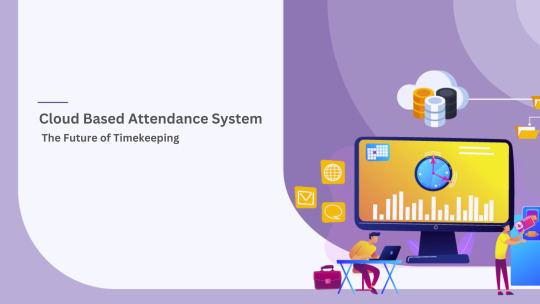
As technology continues to evolve, the future of employee attendance management systems looks promising. The following are some tendencies to be aware of:
Integration with Other HR Systems: Employee attendance systems are likely to become more integrated with other HR systems, such as payroll and project management, to provide a seamless experience for both employees and managers.
AI and Machine Learning: AI and machine learning algorithms can help predict attendance patterns and identify anomalies, allowing businesses to proactively manage attendance issues.
Mobile Apps: Mobile apps are likely to become the primary interface for employee attendance management, allowing employees to clock in and out easily from their smartphones.
Biometric Authentication: Biometric authentication, such as fingerprint or facial recognition, is likely to become more common in employee attendance systems, further enhancing security and accuracy.
The Evolution of Timekeeping Systems
Over the years, timekeeping systems have evolved significantly. From manual punch cards to sophisticated biometric scanners, the way businesses track employee attendance has undergone a dramatic transformation. One of the most significant advancements in recent years is the shift towards cloud-based attendance systems. These systems leverage the power of the cloud to provide real-time attendance tracking and management capabilities, making them a preferred choice for businesses of all sizes.
Benefits of Cloud-Based Attendance Systems
Cloud-based attendance systems offer a wide range of benefits for businesses. One of the key advantages is the ability to access attendance data from anywhere, at any time. This flexibility allows managers to make informed decisions quickly, leading to improved operational efficiency. Additionally, cloud-based systems eliminate the need for physical infrastructure and manual data entry, reducing the risk of errors and saving businesses time and money in the long run.
Future Trends in Employee Attendance Management

The future of employee attendance management is likely to be shaped by several key trends. One such trend is the integration of attendance systems with other HR systems, such as payroll and keyboard tracking with performance management. This integration will provide businesses with a more holistic view of their workforce, enabling them to make more informed decisions. Additionally, AI and machine learning are expected to play a more significant role in attendance management, helping businesses predict attendance patterns and identify potential issues before they arise.
The Role of Mobile Apps in Employee Attendance Management
Mobile apps are becoming an increasingly popular choice for employee attendance management. These apps allow employees to clock in and out using their smartphones, providing them with greater flexibility and convenience. Additionally, mobile apps can offer features such as geolocation tracking, which can help businesses ensure that employees are clocking in from the correct location. Overall, mobile apps are expected to play a more significant role in employee attendance management in the future, providing businesses with greater flexibility and convenience.
In Conclusion
Cloud-based attendance system is revolutionizing the way businesses track and manage employee attendance. With their numerous benefits and future advancements, these systems are poised to become an integral part of modern workforce management.
#Cloud based system#Attendance Monitoring#Employee attendance system#Attendance management system#Cloud based attendance system
0 notes
Text
The Future of Timekeeping: Employee Cloud-Based Attendance System
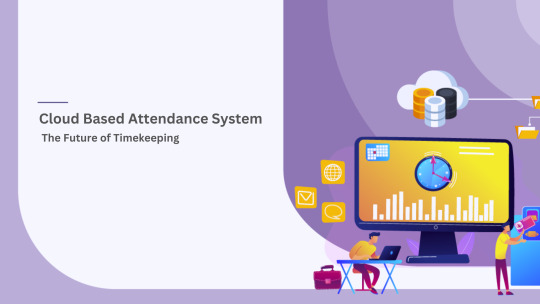
Streamlining businesses' operations and improving efficiency are constantly top priorities in today's fast-paced world. One area that has seen significant advancements is employee timekeeping. Traditional methods of tracking employee attendance, such as manual time clocks or paper timesheets, are becoming obsolete. Instead, companies are turning to cloud based attendance system to manage their workforce more effectively.
What Is A Cloud Based Attendance System?
A cloud based attendance system is a digital solution that allows businesses to track and manage employee attendance electronically. Unlike traditional systems, which require physical infrastructure and manual data entry, cloud-based systems store data securely in the cloud. It means that employees can clock in and out using their smartphones or computers, and managers can access real-time attendance data from anywhere with an internet connection.
Benefits Of Employee Cloud Based Attendance Systems
Increased Accuracy: Cloud-based attendance systems eliminate the need for manual data entry, reducing the risk of errors associated with traditional methods.
Cost-Effective: By eliminating the need for physical infrastructure and manual processes, cloud-based attendance systems can help businesses save money in the long run.
Improved Efficiency: With real-time attendance data available at their fingertips, managers can make informed decisions quickly, leading to improved operational efficiency.
Enhanced Security: To safeguard private employee data, cloud-based attendance solutions provide strong security features including authentication and encryption.
Remote Access: Managers can access attendance data from anywhere, making it easier to manage remote or distributed teams.
The Future of Employee Attendance Management System

As technology continues to evolve, the future of employee attendance management systems looks promising. The following are some tendencies to be aware of:
Integration with Other HR Systems: Employee attendance systems are likely to become more integrated with other HR systems, such as payroll and project management, to provide a seamless experience for both employees and managers.
AI and Machine Learning: AI and machine learning algorithms can help predict attendance patterns and identify anomalies, allowing businesses to proactively manage attendance issues.
Mobile Apps: Mobile apps are likely to become the primary interface for employee attendance management, allowing employees to clock in and out easily from their smartphones.
Biometric Authentication: Biometric authentication, such as fingerprint or facial recognition, is likely to become more common in employee attendance systems, further enhancing security and accuracy.
The Evolution of Timekeeping Systems
Over the years, timekeeping systems have evolved significantly. From manual punch cards to sophisticated biometric scanners, the way businesses track employee attendance has undergone a dramatic transformation. One of the most significant advancements in recent years is the shift towards cloud-based attendance systems. These systems leverage the power of the cloud to provide real-time attendance tracking and management capabilities, making them a preferred choice for businesses of all sizes.
Benefits of Cloud-Based Attendance Systems
Cloud-based attendance systems offer a wide range of benefits for businesses. One of the key advantages is the ability to access attendance data from anywhere, at any time. This flexibility allows managers to make informed decisions quickly, leading to improved operational efficiency. Additionally, cloud-based systems eliminate the need for physical infrastructure and manual data entry, reducing the risk of errors and saving businesses time and money in the long run.
Future Trends in Employee Attendance Management

The future of employee attendance management is likely to be shaped by several key trends. One such trend is the integration of attendance systems with other HR systems, such as payroll and keyboard tracking with performance management. This integration will provide businesses with a more holistic view of their workforce, enabling them to make more informed decisions. Additionally, AI and machine learning are expected to play a more significant role in attendance management, helping businesses predict attendance patterns and identify potential issues before they arise.
The Role of Mobile Apps in Employee Attendance Management
Mobile apps are becoming an increasingly popular choice for employee attendance management. These apps allow employees to clock in and out using their smartphones, providing them with greater flexibility and convenience. Additionally, mobile apps can offer features such as geolocation tracking, which can help businesses ensure that employees are clocking in from the correct location. Overall, mobile apps are expected to play a more significant role in employee attendance management in the future, providing businesses with greater flexibility and convenience.
In Conclusion
Cloud-based attendance system is revolutionizing the way businesses track and manage employee attendance. With their numerous benefits and future advancements, these systems are poised to become an integral part of modern workforce management.
#Cloud based system#Attendance Monitoring#Employee attendance system#Attendance management system#Cloud based attendance system
0 notes
Text

Connectware Hospitality offers features designed to modernize your hotel communications. Whether you’re managing a hotel chain or restaurant, hospitality industry software solutions can empower businesses to create exceptional experiences for their customer's service. Learn More...
#hotel phone system#hotel pbx#ip telephony#cloud technology#unified communications#hotel hospitality#phonesuite voiceware#voiceware by phonesuite#hotel phone installation#phonesuite pbx#hotel industry#cloud pbx#cloud based system#mobilevoip#Connectware#voip solutions#voip services#voip phone#Voice Calls#SIP Trunking#hotel communications#Modern VoIP Phone
0 notes
Text

As a hospitality business, to ensure your hotel or vacation rental stays competitively priced while also maximizing occupancy, rate intelligence tools can help you automate much of the process. Read More...
#voip technology#business phones#voip phone#voip advantages#phonesuite dealers#pbx system#pbx communications#phonesuite direct#hotel phone system#hotel hospitality#SIP Trunks#Voice Calls#mobile phones#IP Telephony#sip trunking#cloud based system#voip solutions#voip services#PBX Solution#mobilevoip
0 notes
Text
actually yeah it is really annoying that we don't have an offline and/or privacy-focused system tracking app and neither option has import options outside of pluralkit
#like sp is exclusively online based and the only import option is pluralkit which is dogshit for privacy#then octocon apparently completely fucked up their privacy features while fixing none of the issues sp has#like simplyplural could be really good for us in concept but in practice we're a large system and theres no easy way for us to get everyone#simply plural#octocon#plurality#pluralgang#also for sp its like why in the lord do you have an import feature but not an export feature#just because something is in the cloud doesn't make it safe (tm)
8 notes
·
View notes
Text

I'm making Hurricane Milton do something useful when he comes (water in my new wildflowers) :P
#It's the least he can do really#my apartments irrigation system was struck by lightning last summer so i try to plan my planting based on the forecast#mind you i was expecting a tropical storm today/monday (that turned out to be nothing) not a cat 3 on wednesday#wildflowers#every cloud silver lining etc etc#juniper blethers
7 notes
·
View notes
Text
How Does a Cloud-Based Business Telephone System Work? Solving Communication Challenges for Modern Businesses
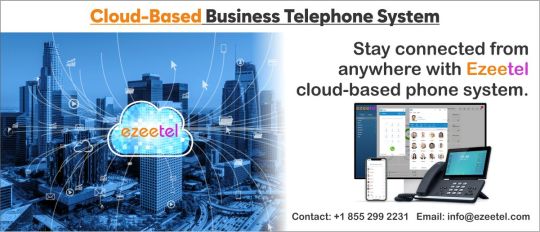
Introduction
In today's fast-paced business world, seamless communication is the lifeblood of any successful organization. Traditional phone systems have their limitations, making it crucial for businesses to adopt modern solutions that can keep up with the demands of the digital era. Enter Ezeetel Telecommunication, a leading provider of cloud-based Business Telephone Systems. In this blog post, we will explore how Ezeetel's cutting-edge technology works, and how it addresses the communication challenges faced by businesses today.
Understanding the Basics of a Cloud-Based Business Telephone System
A cloud-based Business Telephone System, also known as Voice over Internet Protocol (VoIP), revolutionizes the way organizations communicate. Unlike conventional landline systems, where communication is routed through physical phone lines, VoIP operates over the internet, transmitting voice data as packets. Ezeetel leverages the power of cloud computing to deliver a robust, reliable, and scalable telecommunication solution to businesses of all sizes.
The Inner Workings of Ezeetel's Business Telephone System
Virtualization of Phone Infrastructure: Ezeetel replaces the need for bulky, on-premises hardware with a virtual phone infrastructure hosted in the cloud. This means businesses no longer need to invest in expensive telephone exchange equipment, reducing both upfront costs and maintenance expenses.
Seamless Call Routing and Management: With Ezeetel's cloud-based system, incoming calls are efficiently routed to the intended recipients, regardless of their location. Advanced call management features, such as call forwarding, auto-attendants, and interactive voice response (IVR) systems, ensure that every call is handled professionally.
Scalability and Flexibility: As businesses grow, so do their communication needs. Ezeetel's solution is highly scalable, allowing companies to add or remove phone lines effortlessly. This flexibility ensures that the system can adapt to organizational changes without major disruptions.
Unified Communication: Ezeetel integrates various communication channels, including voice, video, and messaging, into a single platform. This unified communication approach streamlines internal collaboration and enhances external interactions with clients and partners.
Mobility and Remote Work Support: In an increasingly remote and mobile work environment, Ezeetel's Business Telephone System shines. Employees can use their smartphones, laptops, or desktop computers to access the system from anywhere with an internet connection, ensuring uninterrupted connectivity.
Solving Communication Challenges for Businesses
Ezeetel's Business Telephone System addresses several critical challenges faced by modern businesses:
Cost-Effectiveness: By eliminating the need for costly on-premises equipment and offering competitive pricing, Ezeetel significantly reduces the overall telecommunication expenses for businesses.
Reliability and Redundancy: The cloud-based infrastructure ensures high system availability, with built-in redundancy to minimize downtime. Businesses can rest assured that their communication channels remain operational at all times.
Enhanced Collaboration: With integrated voice, video, and messaging features, Ezeetel fosters seamless communication and collaboration among team members, boosting productivity and efficiency.
Business Continuity: In case of natural disasters or emergencies, Ezeetel's cloud-based system ensures that communication remains intact, allowing businesses to continue operations without disruption.
Global Reach: Ezeetel's VoIP system enables businesses to establish virtual phone numbers in multiple countries, expanding their reach and providing a localized experience for customers worldwide.
Conclusion
In conclusion, Ezeetel's cloud-based Business Telephone System represents the next generation of telecommunication solutions, empowering businesses with unparalleled communication capabilities. By virtualizing phone infrastructure, enhancing collaboration, and addressing the challenges of modern communication, Ezeetel enables organizations to thrive in today's dynamic business landscape. Embrace the power of cloud-based telephony and take your business communication to new heights with Ezeetel Telecommunication.
#cloud-based Business Telephone System#Business Telephone System#canada#cloud PBX for small business canada
2 notes
·
View notes
Text
How Restaurant Management Software Streamlines Operations and Boosts Efficiency
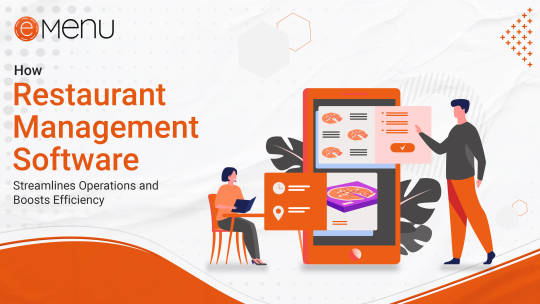
The restaurant industry is highly competitive, and efficient operations play a crucial role in the success of any establishment. In today's digital age, restaurant management software has emerged as a powerful tool to streamline operations and boost efficiency. This blog post explores the various ways in which restaurant management software revolutionizes the way restaurants operate, enabling them to deliver exceptional customer experiences while optimizing their backend processes.
The Role of Restaurant Management Software:
Online eMenu Restaurant management software is a comprehensive solution designed to handle the diverse aspects of running a restaurant. It encompasses a wide range of features and functionalities that simplify day-to-day operations, enhance productivity, and improve overall efficiency. From Restaurant tasks to Restaurant operations, the software offers a centralized platform to manage and streamline various processes.
Streamlining Restaurant Operations:
In the bustling environment of a restaurant, managing Restaurant operations efficiently is essential. Online eMenu Restaurant management software offers tools for reservation and table management software, allowing customers to book tables online and providing staff with real-time updates on reservations. This helps optimize table turnover and maximize seating capacity, leading to better customer service and increased revenue. Additionally, the software integrates with the point-of-sale (POS) system, enabling seamless order taking and processing.
Enhancing Restaurant Efficiency:
Efficiency in the Restaurant operations is equally important for smooth restaurant functioning. With restaurant management software, staff scheduling and labor management become hassle-free. The software automates scheduling, taking into account factors such as staff availability and workload, resulting in optimized staff allocation and improved productivity. It also tracks labor costs and performance metrics, providing valuable insights for effective decision-making.
Supplier and procurement management is another critical aspect that software addresses. By streamlining the ordering process and managing suppliers, restaurants can ensure timely and accurate deliveries. The software facilitates inventory forecasting, minimizing wastage and optimizing stock levels. Real-time reporting and analytics capabilities empower restaurant owners and managers to monitor sales, expenses, and performance, enabling data-driven decision-making.
Customer Relationship Management (CRM):
Building strong customer relationships is vital for the success of any restaurant. Restaurant management software Customer Relationship Management (CRM) helps in creating and maintaining customer profiles, capturing preferences, and analyzing data to deliver personalized experiences. Additionally, the software facilitates the implementation of loyalty programs and targeted marketing campaigns, allowing restaurants to engage with customers effectively and increase customer retention.
Ensuring Data Security and Accessibility:
Data security is a paramount concern in today's digital landscape. Restaurant management software offers robust security measures to protect sensitive customer information and business data. Cloud-based solutions provide data backup and ensure accessibility from anywhere, anytime, allowing owners and managers to monitor and manage their restaurant's operations remotely. User access control features further enhance data privacy and confidentiality.
Case Studies: Success Stories of Restaurant Management Software Implementation
Real-life examples of restaurants that have implemented restaurant management software can provide valuable insights into its effectiveness. Case studies highlighting specific improvements and outcomes achieved through the software demonstrate how it has helped restaurants streamline their operations, enhance efficiency, and deliver exceptional dining experiences.
Challenges and Considerations:
While restaurant management software offers numerous benefits, it's essential to consider potential challenges and factors when selecting the right software. Factors such as cost, scalability, user-friendliness, and integration capabilities with existing systems should be evaluated before making a decision. Addressing these considerations ensures a successful implementation and maximizes the software's potential.
Conclusion:
Restaurant Management software has become a game-changer in the industry, revolutionizing the way restaurants operate. By streamlining operations, enhancing efficiency, and optimizing processes, this software empowers restaurants to deliver exceptional customer experiences while driving profitability. As technology continues to shape the future of the restaurant industry, embracing restaurant management software becomes essential for those seeking.
#restaurant management software#contactless menu system#qr code#restaurant management system#restaurant pos system#contactless menu#contactless qr code menu#contactless ordering app#point-of-sale (POS) system#point-of-sale system#pos billing software#restaurant pos software#pos system#pos software#restaurant software#restaurant sales#restaurant#qrcodemenu#qr code menu#cloud based pos billing system#cloud based pos billing software#crm software#crmintegration#restaurant crm#restaurant crm software#crm development#online food ordering software#online food ordering system#food ordering system online#Restaurant Table Booking
4 notes
·
View notes
Text

Landline to VoIP: What changes and what stays the same Moving from landline to VoIP? See what stays consistent and what levels up when you embrace modern, cloud-powered business phone systems.
0 notes
Text
Call Center Solutions India
Experience seamless connectivity with our omnichannel cloud call center solution. Maximize operational efficiency with go2market's cloud call center

#Call Center Solution in Delhi#Cloud Call Center Solution in Noida#Cloud Telephony Providers In India#Virtual Call Center Solutions India#Cloud-based Call Center Solutions In India#Call Center Solutions Providers In India#Call Center Solution Providers In India#Call Center Solutions India#Call Management System India#IVR System For Call Center In India#Cloud Based Phone System India#Cloud Telephony Cost In India#go2market
0 notes
Text
Advantages of Payroll Management Software







#payroll management software india#payroll management software#best payroll software in uae#payroll processing software in uae#hr solution#Best HRMS software#HR and payroll management system#hrms software#hr system software#best hr management software#HR software for small businesses#Cloud-based HR software#hr software for onboarding#best hr onboarding software#leave management software#leave management system
0 notes
Text

IMC has emerged as an invaluable asset for hotels looking to unlock hidden insights in their structured and unstructured databases. Read on to learn about the secrets of in-memory computing and why it could be essential for your business growth. Learn More...
#ip telephony#hotel pbx#unified communications#phonesuite voiceware#cloud technology#phonesuite pbx#voiceware by phonesuite#hotel phone installation#hotel hospitality#hotel phone system#cloud pbx#voip solutions#voip services#cloud based system#PBX Solution#VoIP#Hotel Business#Unified Communications#voip technology
0 notes
Text
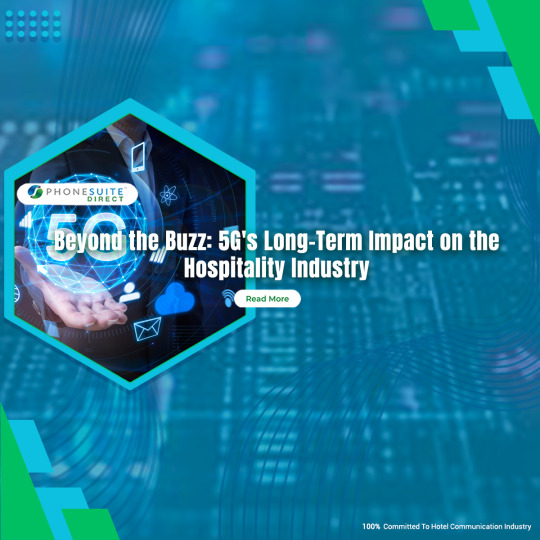
5G technology can offer advantages that have the potential to revolutionize the hotel landscape. Let’s take some time to dive deeper into how and why this next-generation wireless technology could have major implications for your business. Read More...
#voip technology#business phones#5G Technology#5G Network#Cloud technology#pbx system#voip advantages#phonesuite direct#voip phone#hotel hospitality#phonesuite dealers#hotel phone system#pbx communications#VoIP Protocol#SIP Protocol#Pms integration#Call Booking#Hotel Technology#Cloud Reservation System#Hotel industry#Business phones#Cloud-based#cloud based#Voip Service#Caller ID
2 notes
·
View notes
Text

Exploring the benefits of cloud voice solutions for global businesses
Effective communication is without a doubt the cornerstone of successful global operations, but even with this insight 86% of employees and executives state that a lack of effective communication is a leading cause of workplace errors. As organisations expand across borders and time zones, traditional telecommunication systems often struggle to meet the demanding requirements of modern enterprises. This is where cloud voice solutions emerge as a game-changing technology, offering unprecedented flexibility, scalability, and efficiency for businesses worldwide.
The transformative benefits of cloud voice solutions
The adoption of cloud-based voice technology represents a sizeable leap in business communication infrastructure. These solutions are changing how organisations connect, collaborate, and conduct their operations across global markets. By moving voice communications to the cloud, businesses are unlocking numerous advantages that directly impact their bottom line and operational efficiency. From substantial cost savings to enhanced operational capabilities, cloud solutions are reshaping how global enterprises approach their communication strategies. Let's explore these transformative benefits in detail.
Optimised cost management
Cost efficiency stands as one of the most compelling benefits of implementing cloud solutions. Traditional telephony systems require substantial upfront investment in hardware, installation, and maintenance. In contrast, cloud-based business phone systems operate on a subscription model, eliminating the need for expensive equipment and reducing capital expenditure significantly. Organisations can redirect these saved resources towards other strategic initiatives, whilst enjoying predictable monthly costs that scale with their needs. The elimination of traditional maintenance contracts and hardware replacement cycles further contributes to long-term cost savings, making cloud solutions an economically sound choice for businesses of all sizes.
Unmatched scalability and flexibility
Scalability and flexibility represent another crucial advantage of cloud voice technology. As businesses expand or contract, their communication needs fluctuate accordingly. Cloud solutions allow organisations to adjust their service capacity instantly, adding or removing users without the complications associated with traditional phone systems. This adaptability is particularly valuable for companies with seasonal fluctuations or rapid growth trajectories, ensuring they maintain optimal communication capabilities without overinvestment. The ability to scale services across multiple locations simultaneously further enhances operational agility, supporting business growth without geographical constraints.
Enhanced mobility and accessibility
Enhanced mobility and accessibility transform how teams collaborate across geographical boundaries. Cloud voice solutions enable employees to access their business phone system from anywhere with an internet connection, using any device. This capability has become increasingly vital in the era of remote work and distributed teams. Whether working from home, travelling, or operating from different office locations, staff members maintain seamless communication with colleagues and clients, ensuring business continuity and productivity. The platform-agnostic nature of these solutions ensures consistent communication experiences across devices, fostering collaboration and maintaining professional standards regardless of location.
Advanced security and reliability
Security and reliability improvements demonstrate the technological superiority of cloud solutions. Leading providers implement enterprise-grade security measures, including encryption and regular security updates, protecting sensitive communications from potential threats. Additionally, cloud systems often feature built-in redundancy and disaster recovery capabilities, ensuring business communications remain operational even during unexpected disruptions or technical issues. Regular automated updates ensure systems remain protected against emerging security threats, while redundant data centres guarantee high availability and business continuity.
Seamless integration capabilities
Integration capabilities with other business applications significantly enhance workflow efficiency. Cloud voice solutions seamlessly connect with customer relationship management (CRM) systems, email platforms, and collaboration tools, creating a unified communications ecosystem. This integration streamlines business processes, improves customer service, and enables data-driven decision-making through comprehensive communication analytics and reporting. The ability to automate routine tasks and access communication data within existing business applications enhances productivity and provides valuable insights into communication patterns and customer interactions.
Cost-effective global communication
Cost-effective international calling represents another significant advantage for global businesses. Cloud voice solutions typically offer competitive rates for international calls and often include features like virtual phone numbers for different countries. This capability allows organisations to establish a local presence in various markets without maintaining physical offices, enhancing their global reach while controlling communication costs. The ability to route calls through the most cost-effective paths and maintain a local presence in multiple markets simultaneously provides significant competitive advantages for internationally operating businesses.
Advanced analytics and reporting
Modern cloud solutions provide sophisticated analytics and reporting capabilities that enable businesses to make data-driven decisions. These systems track call metrics, monitor the quality of service, and generate detailed reports on communication patterns and usage. This wealth of information helps organisations optimise communication strategies, improve resource allocation, and enhance customer service quality. Real-time monitoring capabilities allow for immediate identification and resolution of issues, ensuring consistent service quality across the organisation.
Embracing the future of business communication
As global business continues to evolve in an increasingly digital world, cloud solutions stand at the forefront of communication technology innovation. These solutions offer more than just a modern alternative to traditional phone systems – they represent a strategic investment in business agility, efficiency, and growth. For organisations looking to maintain competitive advantage in the global marketplace, implementing cloud voice solutions is no longer optional but essential.
The combination of cost efficiency, scalability, enhanced security, and advanced features makes these systems an invaluable asset for businesses of all sizes. As technology continues to advance and remote work becomes more prevalent, the role of cloud solutions in enabling seamless, efficient, and reliable business communication will only grow in importance. Organisations that embrace these solutions today position themselves well for the communications challenges and opportunities of tomorrow, ensuring they remain agile, competitive, and ready for whatever the future holds.
#cloud based phone systems#business phone systems#voip phone price#school phone systems#voip for law firms#real estate phone system#phone systems for healthcare
0 notes
Text

Why an online telephone system is better than traditional phone landlines: A comparison
As technology continues to evolve, many businesses are questioning whether to stick with traditional landlines or migrate to modern online telephone systems. This comprehensive comparison explores a few key compelling reasons why a cloud telephone system presents a superior choice for businesses looking to enhance their communication capabilities and operational efficiency.
With the rapid digitalisation of business operations, making informed decisions about communication infrastructure has never been more critical for maintaining competitive advantage and ensuring sustainable growth. With 90% of business communication expected to be represented by cloud solutions, the transformation from conventional telephony to digital solutions seems to represent more than just a technological upgrade—it's a strategic business decision that can impact operational efficiency, customer satisfaction, and bottom-line results.
Cost-effectiveness and reduced infrastructure requirements
One of the most significant advantages of an online telephone system lies in its cost-effectiveness. Traditional landline systems require substantial initial investment in hardware, copper wire infrastructure, and physical phone units. Plus, businesses must factor in ongoing maintenance costs, line rental fees, and expensive international call rates. In contrast, cloud telephone systems operate through existing internet infrastructure, eliminating the need for separate phone lines and reducing hardware requirements to a minimum. The subscription-based model typically includes free or heavily discounted international calls, automatic updates, and maintenance, resulting in predictable monthly expenses rather than unexpected maintenance costs. Many businesses report up to 60% savings after switching from traditional landlines to internet-based phone solutions.
Furthermore, the scalability of these systems means businesses only pay for the capacity they need, with the ability to adjust services as their requirements change. This flexibility in pricing and service levels makes online telephone systems particularly attractive for growing businesses and organisations with seasonal fluctuations in communication needs. The elimination of physical infrastructure also reduces the risk of damage from natural disasters or physical interference, leading to lower insurance costs and improved business continuity planning. Additionally, the reduced need for on-premises equipment translates to savings in office space and energy consumption, contributing to cost reduction and environmental sustainability goals.
Enhanced mobility and remote work capabilities
The modern workplace demands flexibility and a cloud telephone system delivers exactly that. Unlike traditional landlines that tie employees to their desks, cloud-based phone systems enable team members to make and receive calls from anywhere with an internet connection. This mobility proves invaluable for businesses embracing remote work arrangements or managing multiple office locations. Employees can access their work phone system through mobile applications, ensuring consistent professional communication whether they're working from home, travelling, or in the office. This flexibility not only improves work-life balance but also enhances business continuity during unexpected disruptions.
The ability to maintain professional communication standards regardless of location has become particularly important in recent years, as businesses adapt to hybrid work models and expand global operations. Additionally, these systems support seamless transitions between devices, allowing employees to start a conversation on their desk phone and continue it on their mobile device without any disruption to the call quality or professional appearance of the communication. The mobile capabilities extend beyond simple voice calls to include video conferencing, instant messaging, and document sharing, creating a truly mobile office environment that supports modern work practices.
For businesses operating across multiple time zones or with international clients, online telephone systems provide the flexibility to manage calls efficiently across different regions.
Features like time-based routing and international number support enable organisations to maintain a local presence in multiple markets without physical offices, expanding their reach while controlling costs. The system's mobility features also support better work-life balance for employees by allowing them to manage their availability and set up custom routing rules based on their working hours and preferences.
Advanced features and integration possibilities
Contemporary cloud telephone systems offer sophisticated features that traditional landlines simply cannot match. These systems seamlessly integrate with CRM software, email platforms, and other business tools, creating a unified communications ecosystem. Features like automated call routing, voicemail-to-email transcription, call analytics, and virtual receptionist capabilities enhance professional communication and customer service quality. Additionally, online systems facilitate video conferencing, instant messaging, and file sharing within the same platform, promoting efficient collaboration across teams.
The ability to scale these features up or down based on business needs provides unparalleled flexibility compared to rigid landline infrastructure. Modern systems also support advanced call handling features such as intelligent call queuing, skills-based routing, and interactive voice response (IVR) systems that can be customised to match specific business requirements. These capabilities enable organisations to create sophisticated communication workflows that would be impossible or prohibitively expensive with traditional landline systems.
Regular software updates also ensure that businesses can access the latest communication features and security enhancements without requiring physical hardware upgrades. The integration capabilities extend to popular business applications like Microsoft Teams and Google Workspace, creating a seamless workflow that improves productivity and reduces the need for context-switching between different applications. Advanced features like artificial intelligence-powered call screening, automatic language translation, and sentiment analysis are becoming increasingly common, providing businesses with tools to improve customer service and operational efficiency.
Improved customer experience and business intelligence
Another reason to choose a cloud telephone system lies in its ability to enhance customer experience through data-driven insights. These systems provide detailed analytics about call patterns, peak times, response rates, and customer interaction history. This type of information enables businesses to optimise staffing levels, improve response times, and identify training opportunities. Features like call queuing, custom greetings, and intelligent routing ensure callers reach the right department quickly, reducing frustration and improving satisfaction. Integration with CRM systems also means customer service representatives have instant access to caller information and interaction history, enabling more personalised and efficient service delivery.
The analytical capabilities extend beyond basic call metrics to include sophisticated reporting tools that can track customer satisfaction trends, identify bottlenecks in communication processes, and measure the effectiveness of marketing campaigns. These insights help businesses make data-driven decisions about resource allocation, training needs, and service improvements. Additionally, the ability to record and analyse calls provides valuable training materials for new staff and helps maintain quality standards across all customer interactions.
Real-time monitoring and reporting features also allow managers to provide immediate support and guidance to team members when needed, ensuring consistent service quality across all customer touchpoints. The system's ability to gather and analyse communication data helps businesses identify patterns in customer behaviour, enabling proactive service improvements and more targeted marketing efforts. Advanced analytics tools can even predict peak call times and customer needs based on historical data, allowing businesses to optimise their resource allocation and improve service delivery.
Making the switch to an online telephone system
The transition from traditional landlines to cloud based phone systems represents a significant but worthwhile investment in your business's future. The advantages are clear: substantial cost savings, enhanced mobility for remote work, advanced features that streamline operations, and improved customer service capabilities backed by powerful analytics. As businesses continue to evolve in an increasingly digital world, modern communication solutions are no longer just an option—they're a necessity for maintaining competitiveness and ensuring long-term success.
#cloud based phone systems#business phone systems#voip phone price#school phone systems#voip for law firms#real estate phone system#phone systems for healthcare
0 notes
Text
Project Management Software and Integrated Solutions for Business Growth

For small and medium-sized businesses aiming to scale efficiently, organized workflows and streamlined communication are critical. This is where Commence Corporation steps in with its powerful digital tools tailored for modern businesses. The company offers a versatile platform that combines essential functions, including Integrated Project Management, to simplify operations and foster growth.
Effective project management is not just about keeping tasks on track—it's about ensuring every department, team, and individual works collaboratively toward a shared goal. Commence Corporation understands this dynamic well. Its tools help businesses break down large projects into manageable parts, assign responsibilities, and monitor progress in real time.
One of the standout features of the platform is its Project Management Software, which is designed to centralize control and offer complete visibility over each stage of a project. From assigning tasks and setting deadlines to tracking performance, businesses can expect improved accountability and time management. This clarity not only increases productivity but also minimizes the chances of delays and budget overruns.
What makes Commence Corporation’s solution unique is its seamless integration capability. With built-in tools for CRM, sales tracking, and customer service, businesses can connect various functions without relying on multiple third-party apps. This integrated environment reduces data silos and boosts overall efficiency, allowing teams to make faster, more informed decisions.
Moreover, user-friendly dashboards, customizable templates, and cloud accessibility mean teams can collaborate from anywhere without losing momentum. Whether you're handling a remote team or juggling multiple client projects, the platform is built to adapt to your business model.
In today’s competitive marketplace, having the right software can be the difference between growth and stagnation. Commence Corporation's all-in-one platform empowers small businesses to operate like large enterprises—without the complexity or the cost.
For businesses looking to achieve seamless coordination, increase output, and drive sustainable growth, investing in the right tools is non-negotiable. With features that address real-world operational challenges, Commence Corporation’s software is the smart choice for future-ready businesses.
#Integrated Project Management#Project Management Software#Commence Corporation#small business project tools#project tracking solution#workflow management#team collaboration software#business growth platform#task management system#cloud-based project tools
0 notes